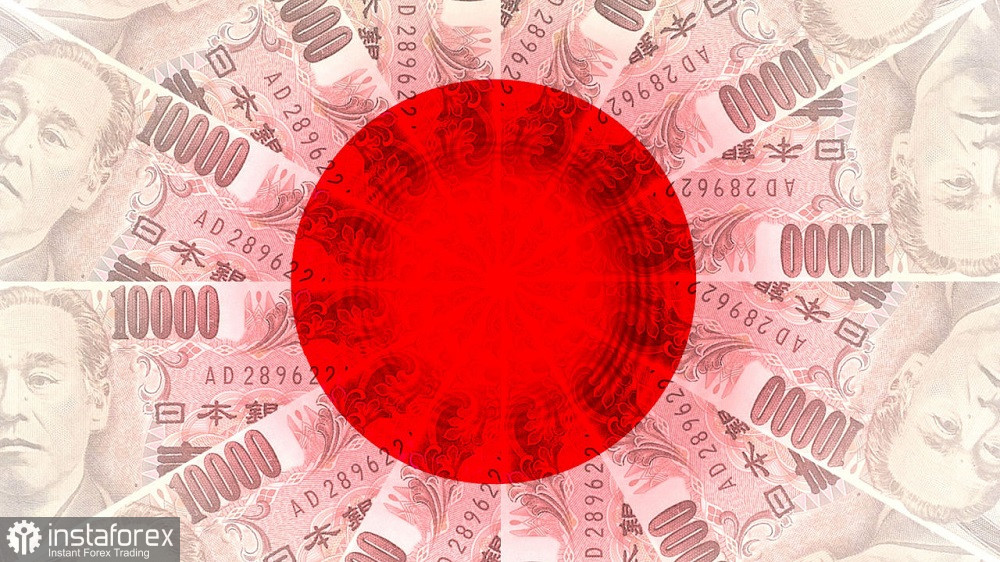Today USD/JPY updated its three-week low, falling to the area of 154. Importantly, the instrument is declining despite the intraday growth of the US dollar index. It means that the yen is setting the tone in the downward move of the currency pair because the yen responds the current fundamental background.

The US dollar, in turn, has been trading sideways lately, also reacting to the current information flow. For example, last week the greenback gained ground in response to an unexpected increase in the consumer confidence index. Instead of the estimated decline to 96.0, the indicator jumped to 102.0. But the dollar bulls did not rest on their laurels for long: literally, a day later, very contradictory data on US GDP growth were published. You are aware that the first quarter's results were revised downwards - from 1.6% to 1.3%. At the same time, most experts were confident that the indicator would not be revised – neither up nor down.
Additional pressure on the dollar was exerted by the core PCE index, which remained at multi-month lows in April. This inflation indicator preferred by the Federal Reserve fell to 2.8% in annual terms in February, the weakest growth rate since April 2021. It came out at the same mark in March. This result disappointed dollar bulls.
The ISM manufacturing PMI, published yesterday in the US, only made the situation worse. The indicator, firstly, remained in the red zone. Secondly, it ended up lower than estimated: instead of the expected growth to 49.8, it decreased to 48.7 points. In other words, instead of the expected growth, the index dived even deeper into the contraction zone. Besides, the downtrend has been recorded for the second month in a row.
The market reacted to this information flow accordingly. According to the CME FedWatch Tool, the market now predicts a 16% chance that the Federal Reserve will cut interest rates by 25 basis points as early as next month, at its July meeting. As for the September policy meeting, the chances of maintaining the status quo have decreased to 36% (from 50). At the same time, the probability of a rate cut by 25 basis points is estimated at 54%, and by 50 basis points – 9%.
Today's growth in the dollar index is due to the anti-risk sentiment. But at the same time, USD/JPY continues to fall like a stone, ignoring the broad-based strengthening of the American currency. This suggests that the driving force behind the decline is not the US dollar, but the yen. This is facilitated by the existing fundamental background.
In particular, the Bank of Japan Governor recently surprised traders with a rather hawkish (for him) statement that the regulator would adjust the degree of monetary support "if core inflation develops "in accordance with the central bank's forecasts." Although he did not talk about any timeline, his rhetoric supported the Japanese currency, especially against the backdrop of accelerating inflation in Japan's capital city.
Thus, the Tokyo Consumer Price Index, which is viewed as a leading indicator for predicting inflation dynamics throughout the country, accelerated in May after a decline in April. The headline CPI rose to 2.2%, after falling to 1.8%, and the core CPI (excluding prices for fresh food) grew to 1.9% after falling to 1.6%. Both figures coincided with the consensus but still reflected an acceleration in inflation.
The yen also reacted to data from the Bank of Japan, according to which prices for corporate services in the country in April grew at the fastest pace since 1991 in annual terms, excluding the impact of tax increases. As you know, the Japanese regulator closely monitors the prices of services, as they reflect the cost of labor more accurately than the prices of commodities.
Importantly, the yen's devaluation has enabled high demand for Japanese exports, thereby increasing inflationary pressure. According to many analysts, this situation will force the central bank to further tighten monetary policy: either by reducing the rate of bond purchases or by raising interest rates.
Thus, the current fundamental background contributes to a further decline in consumer prices - not only due to the weakening of the greenback but also due to the strengthening of the yen.
From a technical point of view, USD/JPY has approached the support level of 154.70, the middle line of the Bollinger Bands indicator on the intraday chart. In this area, the downward dynamic has stalled. So, selling will only make sense after USD/JPY bears test this target. The bearish target is 153.40, this is the lower border of the Kumo cloud on the D1 timeframe.





















